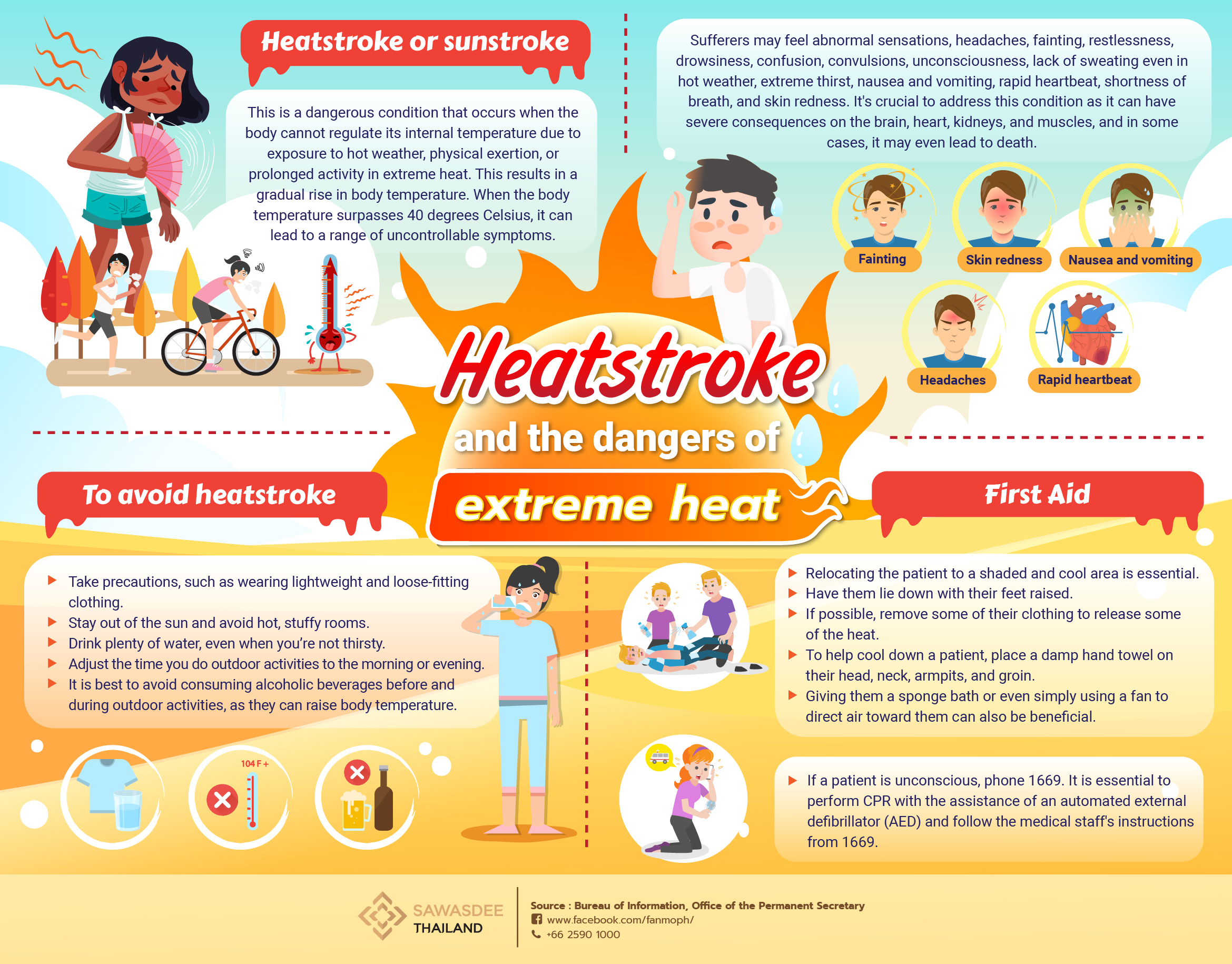
People with medical conditions should be cautious during the scorching summers in Thailand, typically from mid-February to May.
The Ministry of Public Health would like to remind everyone to exercise caution during the summer months and remain mindful of the potential risks associated with high temperatures, as they can impact us directly.
Heatstroke or sunstroke is a severe condition. The Department of Medical Services has reported that, between March and May 2015-2019, an average of 43 people per year died because of hot weather. This issue is not limited only to our area, as many nations in temperate zones, such as the United States, France, and Japan, face similar problems. Unfortunately, with global warming causing higher temperatures worldwide, the number of patients suffering from heatstroke has increased in frequency and severity.
Sunstroke, also known as heatstroke, occurs when the body cannot regulate its internal temperature because of exposure to hot weather, physical exertion, or prolonged activity in extreme heat. This results in a gradual rise in body temperature
When the body temperature surpasses 40 degrees Celsius, it can result in a range of uncontrollable symptoms, such as abnormal sensations, headaches, fainting, restlessness, drowsiness, confusion, convulsions, unconsciousness, lack of sweating even in hot weather, extreme thirst, nausea and vomiting, rapid heartbeat, shortness of breath, and skin redness. It's crucial to address this condition, as it can have severe consequences on the brain, heart, kidneys, and muscles, and in some cases, it may even lead to death.
Therefore, people with heatstroke symptoms should be taken to the nearest hospital as soon as possible.
In a medical emergency, relocating the patient to a shaded and cool area is essential. Have them lie down with their feet raised. If possible, remove some of their clothing to help their body cool down.
To help cool down a patient, place a damp towel on their head, neck, armpits, and groin. Giving them a sponge bath or even simply using a fan to direct air toward them can also be beneficial. If the situation is serious, call 1669 for assistance to transport the patient to the hospital.
If a patient is unconscious, it is essential to perform CPR with the assistance of an automated external defibrillator (AED) and follow the medical staff's instructions from 1699. To avoid heatstroke, take certain precautions, such as wearing lightweight and loose-fitting clothing, staying away from the sun or poorly ventilated areas, drinking plenty of water even when you’re not thirsty, and adjusting the time you do outdoor activities to the morning or evening. Additionally, it is best to avoid consuming alcoholic beverages before and during outdoor activities, as they can raise body temperature.
